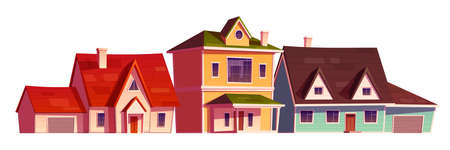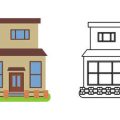Understanding the Plumbing System in UK Homes
When it comes to plumbing repairs in British homes, a solid understanding of local plumbing layouts, materials, and regulations is essential. Unlike continental European systems or those found in North America, UK properties feature some unique characteristics that impact both maintenance and repair strategies. Recognising these distinctions will empower you to diagnose common issues with confidence and carry out appropriate fixes.
Typical Plumbing Layouts in British Properties
Most UK homes are designed around either a traditional gravity-fed system or a modern mains pressure system. The layout you encounter often depends on the age and style of the property:
| System Type | Description | Commonly Found In |
|---|---|---|
| Gravity-Fed System | Relies on water tanks (usually in the loft) and a hot water cylinder. Water pressure is generated by gravity. | Older Victorian, Edwardian, and mid-century homes |
| Mains Pressure System (Combi Boiler) | Direct connection to the mains supply; provides hot water on demand without storage tanks. | Modern flats and houses built post-1990s |
Materials Used in UK Plumbing
The choice of pipe material significantly affects both the durability and repair approach. Here’s an overview of what you’re likely to find:
| Material | Advantages | Common Use Cases |
|---|---|---|
| Copper | Durable, corrosion-resistant, suitable for both hot and cold water | Main supply pipes, radiator systems |
| PVC/Plastic (Push-fit) | Easy installation, lightweight, cost-effective | Bathroom renovations, extensions, quick fixes |
Navigating UK Plumbing Regulations
The UK has strict plumbing regulations—most notably set out in the Water Supply (Water Fittings) Regulations 1999—which aim to ensure safety and prevent contamination of drinking water. These rules cover everything from backflow prevention devices to pipe insulation standards. It’s vital to check whether your intended repairs require compliance certification or notification to your local water authority before starting work.
Key Points for Homeowners
- If unsure about pipework or water pressure, consult your property’s original plans or seek advice from a certified plumber familiar with British standards.
- Be mindful that DIY work on mains-fed systems may be restricted under current regulations.
Aesthetic Tip
If you’re planning to expose any pipework as part of your repair or renovation project, consider using chrome or copper finishes for a look that complements both period features and contemporary interiors—a hallmark of classic British design.
2. Recognising Common Plumbing Problems
Whether you live in a charming Victorian terrace or a sleek new-build flat, plumbing issues are an inevitable part of British home life. Spotting the signs early can help prevent minor annoyances from becoming major headaches. Here’s a guide to identifying typical plumbing problems, along with insights into how the quirks of both older and newer UK homes influence these issues.
Leaky Taps: The Constant Drip
A dripping tap is more than just an irritant—it wastes water and can hike up your bills. In period properties, worn washers and limescale build-up are frequent culprits, while mixer taps in modern kitchens may develop leaks due to faulty cartridges.
Signs to Watch For:
- Persistent dripping even when fully turned off
- Water staining around the tap base
- Difficulty turning handles or levers
Low Water Pressure: More Than a Trickle
Low water pressure often feels like a uniquely British problem, especially in older properties with outdated pipework or gravity-fed systems. Newer homes might face pressure drops due to shared mains supply or blocked aerators.
| Possible Cause | Typical in Older Homes? | Typical in New Builds? |
|---|---|---|
| Corroded pipes | Yes | No |
| Limescale build-up | Yes | Sometimes |
| Main supply issues | No | Yes |
| Faulty pressure regulator | No | Yes |
Blocked Drains: When Water Won’t Budge
A sluggish sink or shower drain is a tell-tale sign of blockage. In historic houses, original clay pipes may be prone to root intrusion, while in newer builds, modern materials can still suffer from accumulated hair, grease, and soap scum.
Telltale Signs:
- Slow-draining water in sinks, baths, or showers
- Bubbling sounds from plugholes
- Unpleasant odours rising from drains
Cold Radiators: A Chilly Dilemma
The classic British radiator—whether cast iron or compact steel panel—can lose efficiency over time. Cold spots or complete lack of heat often point to trapped air (needing bleeding), sludge build-up, or faulty thermostatic valves.
Common Radiator Problems by Home Age:
| Problem | Older Homes (Pre-1950s) | Newer Homes (Post-2000s) |
|---|---|---|
| Sludge build-up | Common (cast iron systems) | Less common but possible |
| Airing needed (bleeding) | Very common | Occasional issue |
| Valve failure | Sporadic (older fittings) | Sporadic (modern TRVs) |
| Poor boiler performance | If not updated regularly | If system isn’t maintained annually |
The unique blend of heritage and modernity in UK homes means that plumbing problems can range from the quaintly fixable to the surprisingly complex. By understanding the most common issues—and what causes them—you’re better equipped to keep your living space comfortable and functional year-round.

3. Essential Plumbing Tools and Materials
When tackling plumbing repairs in UK homes, having the right tools and materials to hand is essential for both efficiency and safety. Whether youre fixing a leaky tap or replacing a worn washer, a well-curated toolkit ensures youre prepared for most minor issues. Below is an overview of the basic equipment every DIY enthusiast should consider, alongside UK-specific fittings and standards that are particularly relevant.
Basic Toolkit for Plumbing Repairs
| Tool | Purpose |
|---|---|
| Adjustable spanner | Tightening and loosening nuts, especially on taps and pipework |
| Pump pliers | Gripping pipes and fittings with various diameters |
| Pipe cutter | Cutting copper or plastic pipes cleanly |
| Basin wrench | Reaching tight spaces behind sinks for tap maintenance |
| Plunger | Clearing blockages in sinks, baths, and toilets |
| Screwdrivers (flathead & Phillips) | Removing screws from fixtures and fittings |
Commonly Used Materials in UK Plumbing
| Material | Description/Use |
|---|---|
| Copper pipe & fittings (15mm/22mm) | Widely used in UK domestic water supply lines; compliant with British Standards (BS EN 1057) |
| Push-fit connectors | Quick, tool-free connections suitable for both copper and plastic pipes; popular for ease of use in UK homes |
| PTFE tape | Teflon tape for sealing threaded joints, preventing leaks at connections |
| Compression fittings | Common for joining pipes without soldering; easily disassembled if needed |
| Washers & O-rings (BS 1212) | Essential for repairing taps and valves; ensure to use British Standard sizes for compatibility |
Understanding UK-Specific Fittings & Standards
The UK plumbing system relies heavily on metric measurements—most commonly 15mm and 22mm for pipes. Always check for compliance with British Standards, such as BS EN 1057 for copper piping or WRAS approval for fittings in contact with drinking water. When purchasing materials, look out for kitemarks indicating conformity to these regulations.
Aesthetic Storage Tips
If you’re keen on maintaining a visually pleasing space, consider storing your tools in labelled boxes or stylish tool rolls. Not only does this keep everything organised, but it also integrates seamlessly into modern British home interiors, ensuring your DIY kit remains both functional and aesthetically pleasing.
4. Step-by-Step Repairs for Everyday Issues
Keeping your UK home’s plumbing in tip-top shape doesn’t have to be overwhelming. Here’s a practical, easy-to-follow guide for addressing some of the most common plumbing issues you’re likely to encounter—each solution tailored to British standards and materials.
Fixing Dripping Taps
A dripping tap is not only annoying but can also waste significant water over time. Most UK homes use compression or ceramic disc taps, so ensure you know which type you have before starting.
| Step | Action |
|---|---|
| 1 | Turn off the water supply using the isolation valve under the sink or the main stopcock. |
| 2 | Remove the decorative cap, unscrew the handle, and take off the cover to expose the mechanism. |
| 3 | Use an adjustable spanner to loosen and remove the tap mechanism. |
| 4 | Replace the old washer (for compression taps) or cartridge (for mixer/ceramic disc taps) with a new one compatible with UK fittings. |
| 5 | Reassemble, turn the water back on, and check for leaks. |
Unblocking Drains
Sinks and showers often clog due to soap residue, hair, or food debris. Here’s how to clear minor blockages without harsh chemicals:
- Wear rubber gloves and remove any visible debris from the plughole.
- If water is still draining slowly, pour a kettle of hot (not boiling) water down the drain.
- If needed, use a plunger with firm, even pressure—ensure there is enough water in the basin to cover the plunger’s cup for a good seal.
- If plunging fails, consider using a hand auger or a proprietary UK-approved drain snake following manufacturer instructions.
- Avoid using caustic soda unless absolutely necessary, as it can damage older British pipework.
Repairing Running Toilets
A constantly running toilet can be caused by a faulty flapper valve or an issue with the fill valve. Modern UK cisterns often feature dual-flush systems, so parts may differ slightly from older models:
- Remove the cistern lid and check if the chain or float arm is tangled or misaligned.
- If the flapper isn’t sealing properly, clean any debris around it or replace it with a compatible UK part.
- If water continues running into the overflow tube, adjust or replace the fill valve as per British plumbing guidelines.
- Test flush several times after repair to ensure proper function and no leaks around seals.
Bleeding Radiators
Inefficient radiators are common in UK homes, particularly during autumn and winter. Bleeding your radiator removes trapped air and restores heat distribution:
- Switch off your central heating system and allow radiators to cool completely.
- Locate the bleed valve at the top of your radiator; use a radiator key (widely available in UK hardware shops).
- Place a cloth beneath the valve and slowly turn anti-clockwise until you hear hissing—this is air escaping. When water starts to dribble out steadily, close the valve tightly.
- Check boiler pressure after bleeding (it should read between 1-1.5 bar); top up if necessary according to your boiler’s manual.
Quick Reference Table: Essential Tools for DIY Plumbing Repairs in UK Homes
| Tool | Description/Use |
|---|---|
| Adjustable Spanner | Tightening/loosening nuts on taps and pipe joints. |
| Pliers | Gripping pipes and fittings securely during repairs. |
| Radiator Key | For bleeding air from radiators efficiently. |
| Cup Plunger | Clearing blockages in sinks and baths. |
| Screwdriver Set | Dismantling tap handles and cistern covers. |
| Torch/Lamp | Illuminating tight spaces under sinks or behind toilets. |
Aesthetic Tip:
Avoid unsightly leaks by promptly addressing these issues—well-maintained plumbing preserves both function and visual harmony within your living space. If in doubt, always consult a local Gas Safe registered plumber for peace of mind and compliance with UK regulations.
5. When to Call a Professional Plumber
Tackling minor plumbing issues can be satisfying and cost-effective, but knowing when to bring in a certified professional is crucial for both safety and compliance with UK regulations. Some repairs are not only complex but also governed by specific legal requirements. Here’s how to recognise when it’s time to call an expert and what you need to consider under UK law.
Identifying Situations That Require Expert Help
Certain plumbing problems are best left to professionals due to the risks involved or the technical expertise required. Attempting these repairs yourself may lead to more severe damage or even invalidate your home insurance policy. The table below outlines common scenarios and whether you should DIY or seek professional assistance:
| Plumbing Issue | DIY | Professional Required |
|---|---|---|
| Replacing tap washers | ✔️ | |
| Unblocking drains (minor) | ✔️ | |
| Fixing major leaks (hidden pipes) | ✔️ | |
| Gas pipe repairs | ✔️ (Gas Safe Registered) | |
| Installing new boilers | ✔️ (Certified Engineer) | |
| Bathroom remodelling involving water supply changes | ✔️ |
Legal Considerations in the UK
Under UK law, specific plumbing works require certification by a qualified professional. For example, any work involving gas appliances must be carried out by a Gas Safe registered engineer. Additionally, extensive modifications to water supply systems often require notification to your local water authority, as per Water Supply (Water Fittings) Regulations 1999.
The Importance of Certification
Employing a certified plumber ensures that the work meets British Standards, which is not only essential for safety but also for maintaining property value and complying with building regulations. In many cases, failure to use a qualified tradesperson can result in fines or issues when selling your property.
Key Takeaways
- If you’re unsure about the complexity of a repair, consult a professional.
- Always check credentials such as Gas Safe registration or membership with recognised trade bodies like CIPHE (Chartered Institute of Plumbing and Heating Engineering).
- Keep documentation of all professionally completed work for future reference and legal protection.
If your plumbing task goes beyond basic maintenance or involves gas, heating systems, or major structural changes, it’s wise—and often legally required—to hire a certified plumber. This approach ensures peace of mind and protects both your home and your investment.
6. Preventative Maintenance Tips for British Homes
Keeping your home’s plumbing system in top condition is all about adopting a proactive approach—especially with the unique challenges posed by the UK’s weather, water hardness, and seasonal shifts. Below, we’ll explore essential preventative care strategies tailored to British households.
Routine Checks to Avoid Surprises
It’s wise to routinely inspect visible pipework for leaks, corrosion, or limescale build-up. Check under sinks, behind toilets, and around boilers at least once a season. Early detection can save you from costly repairs later on.
Key Areas for Inspection
| Area | What to Look For |
|---|---|
| Kitchen & Bathroom Pipes | Damp patches, drips, mineral build-up |
| Boiler & Radiators | Leaks, rust spots, unusual noises |
| Outdoor Taps & Hoses | Cracks, leaks (especially after winter) |
Tackling Hard Water in the UK
Many British regions have hard water, leading to limescale build-up in pipes and appliances. Installing a water softener or descaler helps prolong the life of your boiler and taps while maintaining efficient water flow.
Simple Solutions for Hard Water
- Fit aerators and limescale filters on taps and showerheads
- Descale kettles and washing machines monthly using vinegar or specialist products
Seasonal Care: Weatherproofing Your Plumbing
The UK’s unpredictable weather means pipes can freeze in winter or expand during summer heatwaves. Insulate exposed pipes in lofts, garages, and exterior walls before cold snaps set in. In extreme weather, allow a trickle of water to run overnight to prevent freezing.
Preparing for Each Season
| Season | Action Required |
|---|---|
| Winter | Insulate pipes, check outdoor taps for frost damage |
| Spring/Summer | Inspect for leaks post-winter; service boiler ahead of colder months |
Regular Professional Maintenance Matters
An annual check-up from a Gas Safe registered engineer ensures your boiler and heating system remain efficient and safe. Combine this with DIY checks for peace of mind all year round.
Your Proactive Plumbing Checklist
- Inspect visible pipes every 3-6 months
- Flush out drains with hot (not boiling) water regularly to prevent blockages
- Treat taps and showerheads against limescale every month in hard water areas
- Book an annual service for your boiler and central heating system
A little foresight goes a long way—embracing these maintenance habits will help keep your British home’s plumbing healthy and hassle-free through every season.


